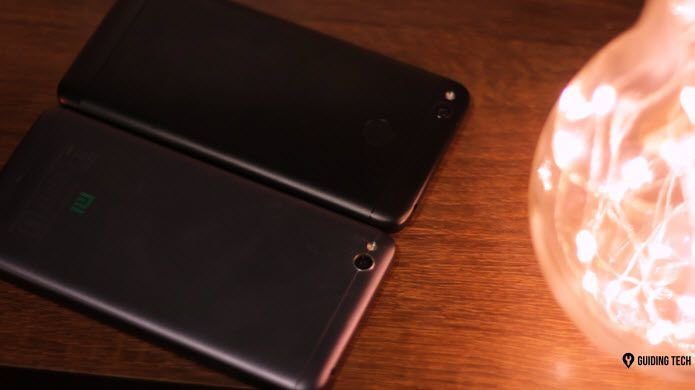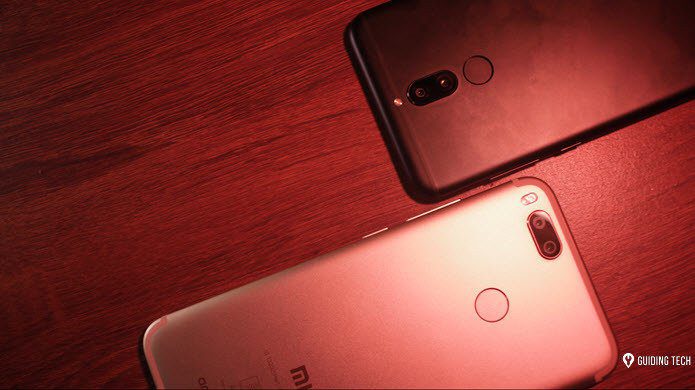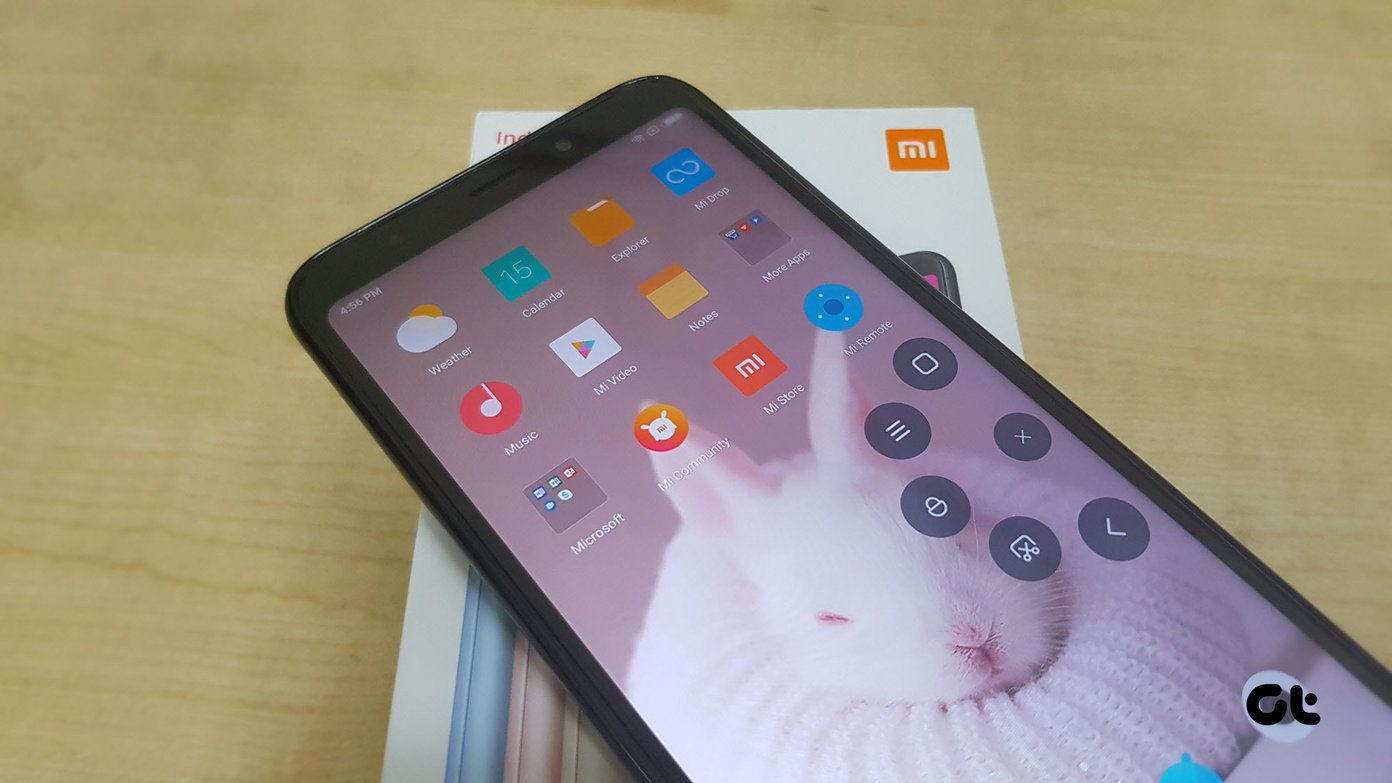Going by the name of Redmi Y1 and sporting a 16-megapixel front camera, Xiaomi’s new budget offering has been made keeping the selfie-centric youths in mind. Another front-runner in the race of budget-friendly phones is the Redmi 4. These two phones are almost in the same price bracket and it seems only fair that we pit the Redmi 4 against the Redmi Y1 and see which Xiaomi phone is better.
1. Design
If you’ve been following the recent phone launched by Xiaomi, you’d have noticed the similarity in the design element in most of its phones. However, with the Mi MiX 2 and the Redmi 4, the design has undergone significant changes. The Redmi 4 is a sleek metal-and-glass phone with a 2.5D curved glass and beautifully rounded corners. The look is justified by the almost negligible camera bump and the chamfered edges of the fingerprint sensor. On the other hand, the Redmi Y1 sports the typical run-of-the-mill look. If you’re familiar with the older Xiaomi phones, you wouldn’t find much difference in this one in terms of design. The same rounded corners come around with the similar look echoing in the rear panel. If looks were all that matters (probably in a parallel universe), I would’ve sided with the Redmi 4 as its small form factor and matte finish at the back has won me over.
2. Display
Moving on to the display, the Redmi 4 sports a 5-inch IPS LCD HD display with a resolution of 720 x 128. The display is bright and crisp and I still haven’t faced any issue with sunlight legibility. On the other hand, the Redmi Y1 features a slightly bigger display. At 5.5-inches, it features an IPS LCD HD screen. The upper hand that the Redmi Y1 has is the Corning Gorilla glass protection, saving your phone from accidental drops. Similar to the older phone, the Redmi Y1’s screen is bright and vivid with the icons appearing sharp and crisp.
3. Hardware
When it comes to hardware, both the devices share many aspects. Both of them are powered by the Qualcomm octa-core Snapdragon 435 SoC. Apart from Redmi 4’s base variant, the Y1 and other variants of the Redmi 4 carry the amount of RAM and internal storage. When it comes to benchmark scores, both the devices have scored almost the same points. The Antutu benchmark tool scored a rating of 43917 for the Redmi 4 while it clocked 43689 for the Redmi Y1. Both the devices handle everyday tasks and run casual games with ease.
4. Software
There are few custom UIs that can give some stiff competition to the feature-rich MIUI. If MIUI 8 was good, the MIUI 9 is way better. The interesting part about the new interface is that Xiaomi has promised that all its devices – right from the Mi 2 to the recent ones – will soon receive the MIUI 9 update. Till then, the Redmi 4 will run the MIUI 8 and the MIUI 9 will supposedly make its appearance in mid-November this year. The same holds true for the Redmi Y1. An older version of Android means that you have to wait for a long time before the Nougat features such as multi-window tasking or mono audio make their way to the Redmi 4.
5. Battery
A great phone with a poor battery is as good as nothing unless you’d want to constantly carry a power bank. Thankfully, the battery life of the Redmi 4 is beyond decent. It’s powered by a whopping 4,100-mAh battery unit, which gives you a one-and-a-half day of juice on a single charge even though Xiaomi promises up to 2 days of activity. On the contrary, the Redmi Y1 packs a decent 3,000mAh battery that should be able to see you through a full day and more, in case of casual usage, on a single charge. The only downside to Redmi Y1’s longer battery life is the longer charging hours. While the Redmi 4 required me to keep it hooked to the charger for roughly four hours, the Redmi Y1 took somewhere around 2 hours to show the 100% mark. As for the charging port, unfortunately, both the phones are still packing the older standards of micro USB.
6. Camera
Now comes the highlight of the Redmi Y1 — the camera. The front camera, to be precise. The Redmi Y1 packs a 16-megapixel selfie shooter with a f/2.0 large aperture, along with a selfie flash. The front camera captures admirable selfies. You can also experiment with different filters and the smart beauty mode. Interestingly, even the displayed age of the subject stays lower in the beauty mode than what it is in reality. Coming to the rear camera, both the phones carry the same specification — a 13-megapixel camera with dual-tone flash. The images look crisp and vivid, and the color reproduction is just about perfect. It’s the low-light pictures that take a hit, as a lot of noise creeps in.
7. Pricing
One of the most important points about buying a smartphone is its price. Let’s start with the older one. The Redmi 4 has three variants and the prices are as follows:
Rs 6,999 for the 2GB/16GB variantRs 8,999 for the 3GB/32GB variantRs 10,999 for the 4GB/64GB variant
On the other hand, the Redmi Y1 has two variants to offer. While the 3GB/32GB variant retails at Rs 8,999, the 4GB/64GB variant is priced at Rs 10,999.
Here’s Your Winner
These were some of the major differences between the Redmi 4 and the Redmi Y1, two budget offerings from Xiaomi. While some of the features like processor, rear camera, or the MIUI version are almost identical in both the phones, the similarity ends when we consider design, front camera specs, the Android versions, or the battery. Deciding on a winner ultimately boils down to your personal preferences. If you prefer a phone with a great selfie shooter, decent battery life, and a not-too-great design, you’d find the Redmi Y1 to be a better choice. However, if you desire a longer battery life, a good design and smaller form factor with an average camera, the Redmi 4 should be a perfect fit for you. The above article may contain affiliate links which help support Guiding Tech. However, it does not affect our editorial integrity. The content remains unbiased and authentic.

























